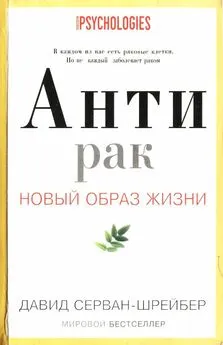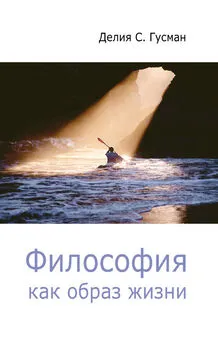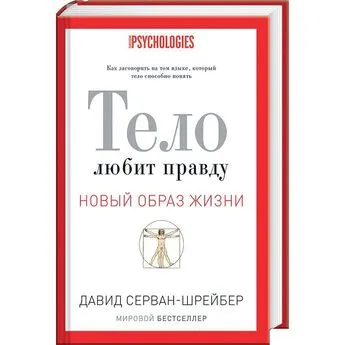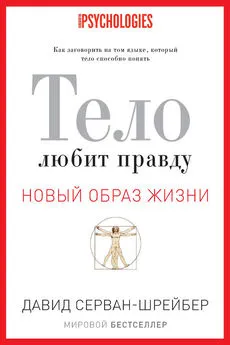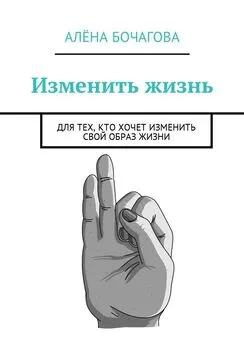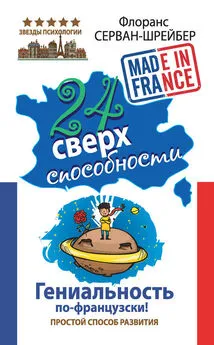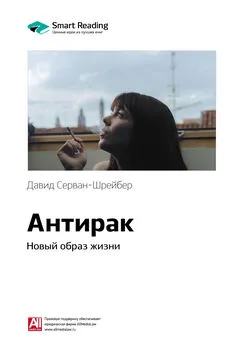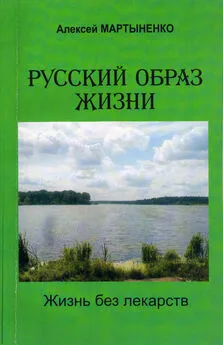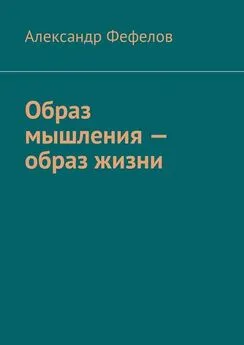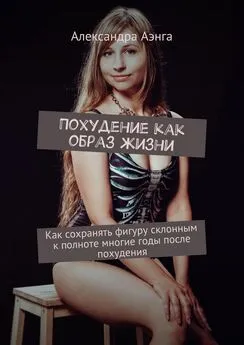Давид Серван-Шрейбер - Антирак. Новый образ жизни
- Название:Антирак. Новый образ жизни
- Автор:
- Жанр:
- Издательство:РИПОЛ классик
- Год:2010
- Город:Москва
- ISBN:978-5-386-02111-5
- Рейтинг:
- Избранное:Добавить в избранное
-
Отзывы:
-
Ваша оценка:
Давид Серван-Шрейбер - Антирак. Новый образ жизни краткое содержание
Антирак. Новый образ жизни - читать онлайн бесплатно ознакомительный отрывок
Интервал:
Закладка:
116. Sasco, A. J., M. B. Secretan, and K. Straif, “Tobacco Smoking and Cancer: A Brief Review of Recent Epidemiological Evidence,” Lung Cancer 45 Supp. 2 (2004): S3-9.
117. Bach, P. B., et al., “Variations in Lung Cancer Risk Among Smokers,” Journal of the National Cancer Institute 95 (2003): 470-78.
118. Pimentel, D., Techniques for Reducing Pesticide Use: Economic and Environmental Benefits (Chichester, UK: John Wiley & Sons, 1997).
119. Cardis, Elizabeth, interview, France Evening News , June 15, 2008.
120. Hardell, L., M. Carlberg, and K. Mild, “Case-Control Study of the Association Between the Use of Cellular and Cordless Telephones and Malignant Brain Tumors Diagnosed During 2000-2003,” Environmental Research 100 (2006): 232-41.
121. U.S. Department of Health and Human Services, The Health Consequences of Smoking: A Report of the Surgeon General (Atlanta, GA: U.S. Department of Health and Human Services, Centers for Disease Control and Prevention, National Center for Chronic Disease Prevention and Health Promotion Office on Smoking and Health, 2004).
122. Travis, L., et al., “Cancer Survivorship—Genetic Susceptibility and Second Primary Cancers: Research Strategies and Recommendations,” Journal of the National Cancer Institute 98, no. 1 (2006): 15-25.
123. Dupont, G., “L’élevage Contribue Beaucoup au Réchauffement Climatique,” Le Monde , December 5, 2006, sec. 9.
124. Bittman, M., “Rethinking the Meat-Guzzler,” New York Times, January 27, 2008.
125. Environmental Working Group, “The Full List: 43 Fruits and Veggies,” available at www.ewg.org, accessed 2006.
Глава 7
1. Baclesse, F., A. Ennuyer, and J. Cheguillaume, “May a Simple Tumorectomy Followed by Radiotherapy Be Performed in the Case of Mammary Tumor?” Journal de Radiologie, d’Electrologie, et de Medecine Nucleaire 41 (1960): 137-9.
2. Fisher, B., et al., “Twenty-Year Follow-up of a Randomized Trial Comparing Total Mastectomy, Lumpectomy, and Lumpectomy Plus Irradiation for the Treatment of Invasive Breast Cancer,” New England Journal of Medicine 347, no. 16 (2002): 1233-41.
Глава 8
1. Cao, Y., and R. Cao, “Angiogenesis Inhibited by Drinking Tea,” Nature 398, no. 6726 (1999): 381.
2. Béliveau, R., and D. Gingras, Les aliments contre le cancer (Outremont, Canada: Trécarré, 2005).
3. Béliveau, R., and D. Gingras, Foods That Fight Cancer: Preventing Cancer Through Diet (New York: Random House, 2006).
4. Campbell, T. C., and T. M. Campbell, Le Rapport Campbell: La plus vaste étude internationale à ce jour sur la nutrition par Colin Campbell, Thomas M Campbell, et Annie Ollivier (Outremont, Canada: Editions Ariane, 2008).
5. Campbell, T. C., The China Study (Dallas, TX: BenBella Books, 2005).
6. Fidler, I. J., “Angiogenic Heterogeneity: Regulation of Neoplastic Angiogenesis by the Organ Microenvironment,” Journal of the National Cancer Institute 93, no. 14 (2001): 1040-41.
7. Fidler, I. J., “Critical Factors in the Biology of Human Cancer Metastasis: Twenty-Eighth G. H. A. Clowes Memorial Award Lecture,” Cancer Research 50, no. 19 (1990): 6130-38.
8. Paget, S., “The Distribution of Secondary Growths in Cancer of the Breast,” Lancet 1 (1889): 571-3.
9. Coussens, L. M., Z. Werb, L. M. Coussens, et al., “Inflammation and Cancer,” Nature 420, no. 6917 (2002): 860-67.
10. Jankun, J., S. H. Selman, R. Swiercz, et al., “Why Drinking Green Tea Could Prevent Cancer,” Nature 387, no. 6633 (1997): 561.
11. Cao and Cao, “Angiogenesis Inhibited by Drinking Tea.”
12. Demeule, M., B. Annabi, J. Michaud-Levesque, et al., “Dietary Prevention of Cancer: Anticancer and Antiangiogenic Properties of Green Tea Polyphenols,” Medicinal Chemistry Reviews-Online 2 (2005): 49-58.
13. Ibid.
14. Zhou J.-R., L. Yu, Z. Mai, G. L. Blackburn, “Combined Inhibition of Estrogen-Dependent Human Breast Carcinoma by Soy and Tea Bioactive Components in Mice,” International Journal of Cancer , 2004; 108(1): 8-14.
15. Zhou, J-R., L. Yu, Y. Zhong, et al., “Soy Phytochemicals and Tea Bioactive Components Synergistically Inhibit Androgen-Sensitive Human Prostate Tumors in Mice,” Journal of Nutrition 133, no. 2 (2003): 516-21.
16. Inoue, M., et al., “Regular Consumption of Green Tea and the Risk of Breast Cancer Recurrence: Follow-up Study from the Hospital-Based Epidemiologic Research Program at Aichi Cancer Center (HERPACC), Japan,” Cancer Letters 167, no. 2 (2001): 175-82.
17. Kurahashi, N., et al., “Green Tea Consumption and Prostate Cancer Risk in Japanese Men: A Prospective Study,” American Journal of Epidemiology 167, no. 1 (2007): 71-77.
18. Knoops, K. T. B., et al., “Mediterranean Diet, Lifestyle Factors, and 10-Year Mortality in Elderly European Men and Women—The HALE Project,” JAMA 292 (2004): 1433-39.
19. Oldways Trust Mediterranean Diet Foundation US, “Mediterranean Diet: The Scientific Evidence” (2009). (Accessed March 15, 2009, at http://www.oldwayspt.org/.)
20. Sofi, F., “Adherence to Mediterranean Diet and Health Status: Meta-Analysis,” British Medical Journal (2008).
21. Owen, R. W., Haubner, R., Wurtele, G., Hull, E., Spiegelhalder, B., Bartsch, H., “Olives and Olive Oil in Cancer Prevention,” European Journal of Cancer Prevention 13 (2004): 319-26.
22. Martin-Moreno, J. M., et al., “Dietary Fat, Olive Oil Intake and Breast Cancer Risk,” International Journal of Cancer 58, no. 6 (1994): 774-80.
23. Stoneham, M., et al., “Olive Oil, Diet and Colorectal Cancer: An Ecological Study and a Hypothesis,” Journal of Epidemiology & Community Health 54, no. 10 (2000): 756-60.
24. Lipworth, L., et al., “Olive Oil and Human Cancer: An Assessment of the Evidence,” Preventive Medicine 26, no. 2 (1997): 181-90.
25. Menendez, J. A., et al., “Oleic Acid, the Main Monounsaturated Fatty Acid of Olive Oil, Suppresses Her-2/neu (erbB-2) Expression and Synergistically Enhances the Growth Inhibitory Effects of Trastuzumab (Herceptin) in Breast Cancer Cells with Her-2/neu Oncogene Amplification,” Annals of Oncology 16, no. 3 (2005): 359-71.
26. Menendez, J. A., et al., “Analyzing Effects of Extra-Virgin Olive Oil Polyphenols on Breast Cancer-Associated Fatty Acid Synthase Protein Expression Using Reverse-Phase Protein Microarrays,” International Journal of Molecular Medicine 22, no. 4 (2008): 433-39.
27. Wu, A. H., M. C. Pike, and D. O. Stram, “Meta-analysis: Dietary Fat Intake, Serum Estrogen Levels, and the Risk of Breast Cancer,” Journal of the National Cancer Institute 91 (1999): 529-34.
28. Ravdin, P. M., K. A. Cronin, N. Howlader, et al., “The Decrease in Breast-Cancer Incidence in 2003 in the United States,” New England Journal of Medicine 356, no. 16 (2007): 1670-74.
29. Agence Française de Sécurité Sanitaire des Aliments, Sécurité et bénéfices des phyto-estrogènes apportés par l’alimentation, Agence Française de Sécurité Sanitaire des Aliments, 2005, Saisine no. 2002-SA-231.
30. Aggarwal, B. B., H. Ichikawa, P. Garodia, et al., “From Traditional Ayurvedic Medicine to Modern Medicine: Identification of Therapeutic Targets for Suppression of Inflammation and Cancer,” Expert Opinion on Therapeutic Targets 10, no. 1 (2006): 87-118.
31. Ferlay, J., F. Bray, P. Piesci, et al., eds., WHO International Agency for Research on Cancer (IARC), IARC Cancer Epidemiology Database, Globocan 2000, Cancer Incidence, Mortality and Prevalence Worldwide (Lyon, France: IARC Press, 2000).
32. Institute for Scientific Information, isihighlycited.com, 2005.
33. Shishodia, S., and B. B. Aggarwal, “Nuclear Factor-kappaB Activation: A Question of Life or Death,” Journal of Biochemistry & Molecular Biology 35, no. 1 (2002): 28-40.
34. Mehta, K., P. Pantazis, T. McQueen, et al., “Antiproliferative Effect of Curcumin (Diferuloylmethane) Against Human Breast Tumor Cell Lines,” Anti-Cancer Drugs 8, no. 5 (1997): 470-81.
35. Aggarwal, B. B., S. Shishodia, Y. Takada, et al., “Curcumin Suppresses the Paclitaxel-Induced Nuclear Factor-kappaB Pathway in Breast Cancer Cells and Inhibits Lung Metastasis of Human Breast Cancer in Nude Mice,” Clinical Cancer Research 11, no. 20 (2005): 7490-98.
36. Carter, A., “Curry Compound Fights Cancer in the Clinic,” Journal of the National Cancer Institute (2008). p. djn141.
37. Cheng, A. L., C. H. Hsu, J. K. Lin, et al., “Phase I Clinical Trial of Curcumin, a Chemopreventive Agent, in Patients with High-Risk or Pre-malignant Lesions ,” Anticancer Research 21, no. 4B (2001): 2895-900.
38. Shoba, G., D. Joy, T. Joseph, et al., “Influence of Piperine on the Pharmacokinet ics of Curcumin in Animals and Human Volunteers,” Planta Medica 64, no. 4 (1998): 353-56.
39. Gao, X., D. Deeb, H. Jiang, et al., “Curcumin Differentially Sensitizes Malignant Glioma Cells to TRAIL/Apo2L-Mediated Apoptosis Through Activation of Pro caspases and Release of Cytochrome c from Mitochondria,” Journal of Experimental Therapeutics & Oncology 5, no. 1 (2005): 39-48.
40. Ooi, V. E., and F. Liu, “Immunomodulation and Anti-Cancer Activity of Polysaccharide-Protein Complexes,” Current Medicinal Chemistry 7, no. 7 (2000): 715-29.
41. Torisu, M., Y. Tayashi, T. Ishimitsu, et al., “Significant Prolongation of Disease-Free Period Gained by Oral Polysaccharide K (PSK) Administration After Curative Surgical Operation of Colorectal Cancer,” Cancer Immunology Immunotherapy 31 (1999): 261-68.
42. Nakazato, H., A. Koike, S. Saji, et al., “Efficacy of Immunochemotherapy as Adjuvant Treatment After Curative Resection of Gastric Cancer,” Lancet 343 (1994): 1122-26.
43. Hara, M., T. Hanaoka, M. Kobayashi, et al., “Cruciferous Vegetables, Mushrooms, and Gastrointestinal Cancer Risks in a Multicenter, Hospital-Based Case-Control Study in Japan,” Nutrition and Cancer 46, no. 2 (2003): 138-47.
44. Torisu, Tayashi, Ishimitsu, et al., “Significant Prolongation of Disease-Free Period . . . ”
45. Kikuchi, Y., I. Kizawa, K. Oomori, et al., “Effects of PSK on Interleukin-2 Production by Peripheral Lymphocytes of Patients with Advanced Ovarian Carcinoma During Chemotherapy,” Japanese Journal of Cancer Research 79, no. 1 (1988): 125-30.
46. Tsujitani, S., Y. Kakeji, H. Orita, et al., “Postoperative Adjuvant Immunochemotherapy and Infiltration of Dendritic Cells for Patients with Advanced Gastric Cancer,” Anticancer Research 12, no. 3 (1992): 645-48.
47. Kariya, Y., N. Inoue, T. Kihara, et al., “Activation of Human Natural Killer Cells by the Protein-Bound Polysaccharide PSK Independently of Interferon and Interleukin 2,” Immunology Letters 31, no. 3 (1992): 241-45.
48. Mizutani, Y., and O. Yoshida, “Activation by the Protein-Bound Polysaccharide PSK (Krestin) of Cytotoxic Lymphocytes That Act on Fresh Autologous Tumor Cells and T24 Human Urinary Bladder Transitional Carcinoma Cell Line in Patients with Urinary Bladder Cancer,” Journal of Urology 145, no. 5 (1991): 1082-87.
49. Torisu, Tayashi, Ishimitsu, et al., “Significant Prolongation of Disease-Free Period . . .”
Читать дальшеИнтервал:
Закладка:
